#NASA mathematician
Explore tagged Tumblr posts
Text
Proverbs Daily Reflection – February 7 dismiss 8, 2025
Katherine Johnson embodied prudence in every aspect of her work and life. She was more than just a brilliant mathematician. She was a woman of wisdom, discernment, and precision. Her careful calculations shaped the future of space exploration. #josephmekaelpageministries
Proverbs 8:12-14 (KJV) – Wisdom, Prudence, and Strength “I wisdom dwell with prudence, and find out knowledge of witty inventions.The fear of the Lord is to hate evil: pride, and arrogancy, and the evil way, and the froward mouth, do I hate.Counsel is mine, and sound wisdom: I am understanding; I have strength.” 💡 Black History Connection – Katherine Johnson & The Power of Prudence 🔹 What is…
#African American pioneers#Apollo missions#Bible#Biblical Wisdom#Black History Month#Blog#dailyprompt#discretion#faith#faith and wisdom#Faith in Action#God#groundbreaking women#Hidden Figures#historical figures#inspirational leaders#Jesus#John Glenn#Joseph#Joseph Mekael Page#Joseph mekael page ministries#Joseph-Mekael-Page#JosephMekaelPageMinistries#Katherine Johnson#knowledge#legacy of excellence#mathematical genius#Mekael#NASA mathematician#Page
0 notes
Text

Katherine Johnson was an African-American mathematician whose work was fundamental at NASA. Her precise calculations helped ensure the success of the Mercury and Apollo space missions, including the historic Apollo 11 moon landing. Her life and work were immortalized in the film "Hidden Figures."
894 notes
·
View notes
Text

#Lucille Coltrane#Jean Clark Keating#Katherine Collie Speegle#Doris Lee#Ruth I. Whitman#Emily Stephens Mueller#nasa#mathematician#computor#50s#1959#engineer#aerospace engineer#Langley Research Center#lucille#jean#doris#katherine#emily#ruth#computer scientist
5 notes
·
View notes
Text

Katherine Johnson by Allison Adams
Katherine Johnson (1918-2020), mathematician and computer scientist, was one of NASA’s human ‘computers,’ who performed the complex calculations that enabled spacecraft to orbit Earth and to land on the moon.
#katherine johnson#art#artwork#Allison adams#herstory#women in stem#black history#woc#female portrait#nasa#female scientists#female mathematicians#women of colour#irl women/girls
8 notes
·
View notes
Text
Career Spotlight: Mathematician (Ages 14-18)
What does a mathematician do? Mathematicians use their expert knowledge of math to solve problems and gain new understanding about how our world works. They analyze data and create mathematical models to predict results based on changes in variables. Many different fields rely heavily on math, such as engineering, finance, and the sciences. Using math […] from NASA https://ift.tt/eoMDqCF
0 notes
Text
instagram
Wow that's incredible 👏🏾👏🏾👏🏾
#hidden figures#nasa#congressional medal of honor#mathematician#katherine johnson#mary jackson#black women#Instagram
0 notes
Text

LaRue Burbank, mathematician and computer, is just one of the many women who were instrumental to NASA missions.
4 Little Known Women Who Made Huge Contributions to NASA
Women have always played a significant role at NASA and its predecessor NACA, although for much of the agency’s history, they received neither the praise nor recognition that their contributions deserved. To celebrate Women’s History Month – and properly highlight some of the little-known women-led accomplishments of NASA’s early history – our archivists gathered the stories of four women whose work was critical to NASA’s success and paved the way for future generations.
LaRue Burbank: One of the Women Who Helped Land a Man on the Moon
LaRue Burbank was a trailblazing mathematician at NASA. Hired in 1954 at Langley Memorial Aeronautical Laboratory (now NASA’s Langley Research Center), she, like many other young women at NACA, the predecessor to NASA, had a bachelor's degree in mathematics. But unlike most, she also had a physics degree. For the next four years, she worked as a "human computer," conducting complex data analyses for engineers using calculators, slide rules, and other instruments. After NASA's founding, she continued this vital work for Project Mercury.
In 1962, she transferred to the newly established Manned Spacecraft Center (now NASA’s Johnson Space Center) in Houston, becoming one of the few female professionals and managers there. Her expertise in electronics engineering led her to develop critical display systems used by flight controllers in Mission Control to monitor spacecraft during missions. Her work on the Apollo missions was vital to achieving President Kennedy's goal of landing a man on the Moon.
Eilene Galloway: How NASA became… NASA
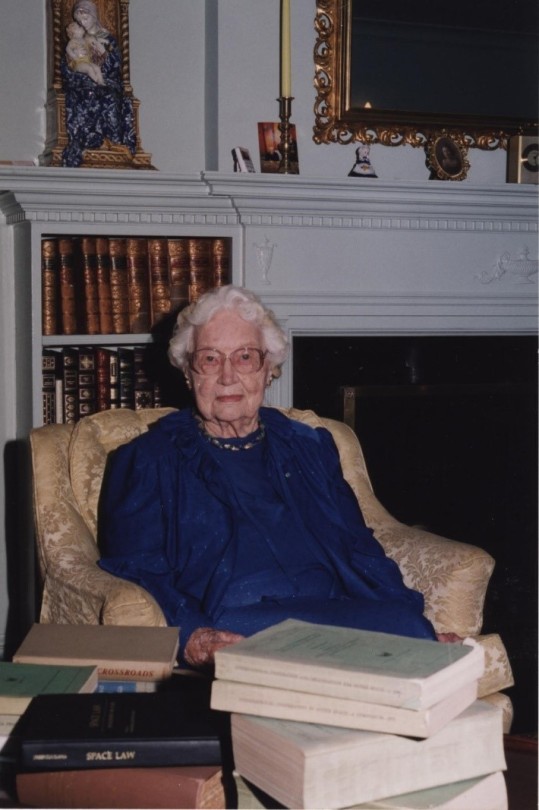
Eilene Galloway wasn't a NASA employee, but she played a huge role in its very creation. In 1957, after the Soviet Union launched Sputnik, Senator Richard Russell Jr. called on Galloway, an expert on the Atomic Energy Act, to write a report on the U.S. response to the space race. Initially, legislators aimed to essentially re-write the Atomic Energy Act to handle the U.S. space goals. However, Galloway argued that the existing military framework wouldn't suffice – a new agency was needed to oversee both military and civilian aspects of space exploration. This included not just defense, but also meteorology, communications, and international cooperation.
Her work on the National Aeronautics and Space Act ensured NASA had the power to accomplish all these goals, without limitations from the Department of Defense or restrictions on international agreements. Galloway is even to thank for the name "National Aeronautics and Space Administration", as initially NASA was to be called “National Aeronautics and Space Agency” which was deemed to not carry enough weight and status for the wide-ranging role that NASA was to fill.
Barbara Scott: The “Star Trek Nerd” Who Led Our Understanding of the Stars
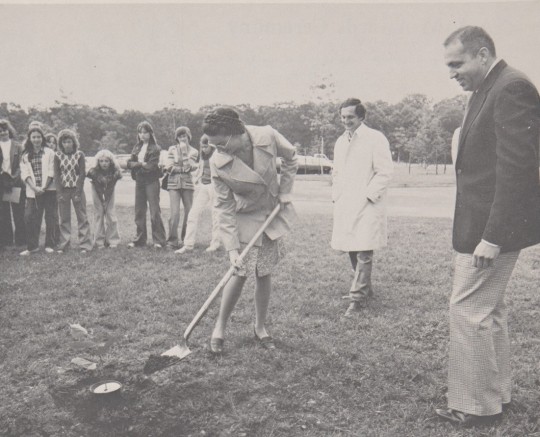
A self-described "Star Trek nerd," Barbara Scott's passion for space wasn't steered toward engineering by her guidance counselor. But that didn't stop her! Fueled by her love of math and computer science, she landed at Goddard Spaceflight Center in 1977. One of the first women working on flight software, Barbara's coding skills became instrumental on missions like the International Ultraviolet Explorer (IUE) and the Thermal Canister Experiment on the Space Shuttle's STS-3. For the final decade of her impressive career, Scott managed the flight software for the iconic Hubble Space Telescope, a testament to her dedication to space exploration.
Dr. Claire Parkinson: An Early Pioneer in Climate Science Whose Work is Still Saving Lives

Dr. Claire Parkinson's love of math blossomed into a passion for climate science. Inspired by the Moon landing, and the fight for civil rights, she pursued a graduate degree in climatology. In 1978, her talents landed her at Goddard, where she continued her research on sea ice modeling. But Parkinson's impact goes beyond theory. She began analyzing satellite data, leading to a groundbreaking discovery: a decline in Arctic sea ice coverage between 1973 and 1987. This critical finding caught the attention of Senator Al Gore, highlighting the urgency of climate change.
Parkinson's leadership extended beyond research. As Project Scientist for the Aqua satellite, she championed making its data freely available. This real-time information has benefitted countless projects, from wildfire management to weather forecasting, even aiding in monitoring the COVID-19 pandemic. Parkinson's dedication to understanding sea ice patterns and the impact of climate change continues to be a valuable resource for our planet.
Make sure to follow us on Tumblr for your regular dose of space!
#NASA#space#tech#technology#womens history month#women in STEM#math#climate science#computer science
2K notes
·
View notes
Text
Katherine Johnson: The Mathematician Who Launched Astronauts into Space and Women into STEM 🚀👩🚀
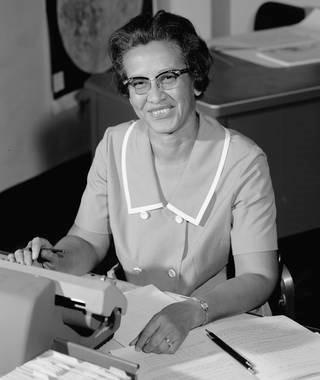
In the vast expanse of the cosmos, where men first dreamed of reaching the stars, Katherine Johnson calculated the path that would get them there. This story isn't just about trajectories and orbits; it's about a woman whose brilliance in mathematics helped break the barriers of space and gender.

Johnson's journey began in White Sulphur Springs, West Virginia, where her curiosity and intelligence shone from an early age. Despite encountering segregation and sexism, she charted a course that would lead her to NASA, where her skills became indispensable to the success of the U.S. space program. Her calculations were critical to the success of the Mercury missions, including John Glenn's pioneering orbital flight, for which he specifically requested Johnson verify the computer's numbers. "If she says they're good," Glenn said, "then I'm ready to go."

But Johnson's contributions went beyond Mercury. She also played a role in the Apollo missions, including the first lunar landing, and her work on orbital mechanics laid the groundwork for the Space Shuttle program and plans for a Mars mission.
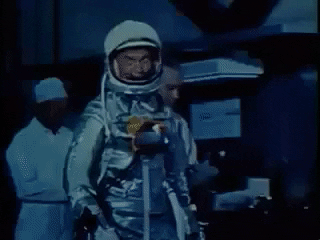
Her legacy is a beacon for women and people of color in STEM, symbolizing the power of intelligence and perseverance to overcome societal constraints. Johnson's story teaches us that the path to the stars is paved with determination, hard work, and an unwavering belief in one's own abilities.

Katherine Johnson's calculations helped lead humanity to the moon, but her impact extends far beyond the numbers. She charted a course for future generations of women in STEM, proving that the sky is not the limit—it's just the beginning. As we look up at the stars, we remember her legacy, not just as a mathematician, but as a trailblazer who launched us into a new era of exploration and equality.
#PiDay#KatherineJohnson#Katherine Johnson#NASA#Mathematics#National Archives#Women's History Month#HERstory#Archives#Apollo13#Mercury#STEM#Women in STEM#Science
618 notes
·
View notes
Text
🧵Meet 15 Jewish Nobel Prize Winners Who Changed History🧵
The Jewish population constitutes just 0.18% of the world (15.3 million out of 8.2 billion), yet approximately 20-30% of Nobel Prize winners in fields like Physics, Chemistry, and Medicine are Jewish. This incredible fact highlights the Jewish community's historic contributions to humanity.
Let’s meet just 15 of the over 200 Jewish Nobel Prize winners.
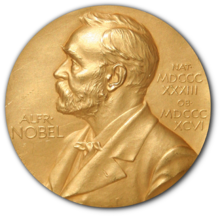
1/ Albert Einstein (1921, Physics).
Einstein was born in Germany to a secular Jewish family. His groundbreaking discovery of the photoelectric effect laid the foundation for quantum mechanics, earning him the Nobel Prize.
▪ His theory of relativity (E=mc²) reshaped our understanding of gravity and spacetime.
▪In 1933, Einstein fled Nazi Germany to the U.S., where he became a vocal advocate for civil rights and Zionism. ▪He helped inspire the Manhattan Project but later became an advocate for nuclear disarmament.

2/ Niels Bohr (1922, Physics).
Born in Denmark to a Jewish mother, Bohr revolutionized atomic physics.
▪His Bohr Model showed electrons orbit the nucleus in distinct energy levels. ▪During WWII, Bohr worked on the Manhattan Project after escaping Nazi persecution. ▪Beyond science, Bohr advocated for global cooperation and peaceful nuclear energy use.

3/ Shmuel Yosef Agnon (1966, Literature).
Born in Galicia (modern-day Ukraine), Agnon immigrated to Ottoman Palestine in 1908.
▪His novels and stories delve into Jewish tradition, spirituality, and the tension between modernity and faith. ▪His acclaimed works include A Simple Story and Only Yesterday. ▪Agnon’s Nobel solidified Hebrew literature's global recognition.

4/ Rosalyn Yalow (1977, Medicine).
Yalow, born in New York to a Jewish family, co-developed radioimmunoassay (RIA), a groundbreaking technique to measure hormones in blood.
▪Her work revolutionized the diagnosis and treatment of diseases like diabetes. ▪Despite gender biases in science at that time, she became the second woman to win the Medicine Nobel.

5/ Baruch Blumberg (1976, Medicine).
Blumberg, a Jewish-American physician, discovered the Hepatitis B virus and developed its vaccine.
▪His research saved millions from liver disease and cancer.
▪Blumberg also served as the first director of NASA’s Astrobiology Institute, exploring life’s origins in the universe.
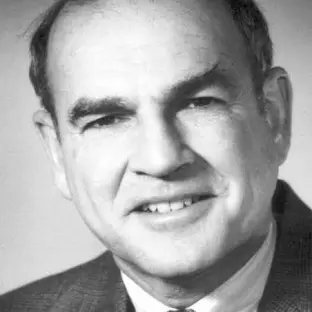
6/ Lev Landau (1962, Physics)
Born in Baku, Azerbaijan, to a Jewish family, Landau made ground-breaking contributions to condensed matter physics and quantum mechanics.
▪His groundbreaking work on superfluidity explained the behavior of liquid helium at extremely low temperatures. ▪Landau also developed the "Landau-Lifshitz equations," foundational in describing ferromagnetism. ▪Known as a genius in theoretical physics, his "Landau Levels" remain crucial in quantum mechanics.

7/ Richard Feynman (1965, Physics).
Feynman, born to Jewish parents in New York, shared the Nobel for his work in quantum electrodynamics (QED).
▪Known for his brilliance and humor, he revolutionized particle physics with "Feynman diagrams." ▪He contributed to the Manhattan Project and inspired countless scientists through his lectures and books like Surely You’re Joking, Mr. Feynman!

8/ Elie Wiesel (1986, Literature).
A Romanian-born Holocaust survivor, Wiesel wrote Night, a searing memoir of his Auschwitz experience.
▪He dedicated his life to Holocaust education and combating hatred. ▪Wiesel’s Nobel recognized his literary contributions, ensuring the horrors of the Holocaust were never forgotten.
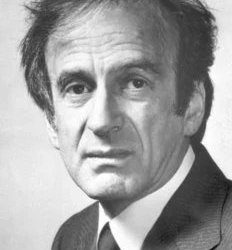
9/ Herbert Hauptman (1985, Chemistry).
Hauptman, a Jewish-American mathematician, co-developed direct methods for solving crystal structures, revolutionizing crystallography.
▪His work paved the way for advances in drug design, enabling scientists to develop life-saving medications. ▪Hauptman’s methods remain foundational in understanding molecular structures in biology and medicine.

10/ Robert Aumann - Yisrael Aumann. (2005, Economics).
An Israeli-American mathematician, Aumann revolutionized game theory, analyzing strategic interactions between rational decision-makers.
▪His work, particularly on "repeated games," has applications in economics, military strategy, and even evolutionary biology. ▪Aumann is an observant Orthodox Jew and has been a vocal advocate for Israel's security and has connected his mathematical insights with the Talmudic concept of fairness and justice. He often reflects on his Jewish heritage in his work and public speeches.

11/ Aaron Ciechanover (2004, Chemistry).
Ciechanover, born in Haifa, Israel, discovered the ubiquitin-mediated protein degradation system.
▪This mechanism explains how cells identify and destroy faulty or damaged proteins, which is essential for maintaining health. ▪His findings have significant implications for treating diseases like cancer, Alzheimer's, and Parkinson's.

12/ Avram Hershko (2004, Chemistry).
Hershko, born in Hungary and a Holocaust survivor, worked alongside Ciechanover on the ubiquitin system.
▪His research showed how proteins are tagged for destruction, which is vital for cellular health. ▪Hershko’s journey from surviving the Holocaust to becoming a Nobel laureate highlights the resilience and brilliance of Jewish scientists.

13/ Daniel Kahneman (2002, Economics).
Kahneman, born in Tel Aviv, is a psychologist whose work transformed economics.
▪He co-authored Thinking, Fast and Slow, exploring how cognitive biases affect decision-making. ▪His prospect theory explained how people assess risk, challenging classical economic theories of rationality.
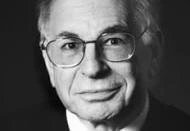
14/ Ada Yonath (2009, Chemistry).
An Israeli crystallographer, Yonath is celebrated for uncovering the 3D structure of ribosomes, the cell's protein factories.
▪Her work advanced the development of antibiotics targeting bacterial ribosomes, combating antibiotic resistance. ▪Yonath is the first Israeli woman to win the Nobel Prize in Chemistry.

15/ Saul Perlmutter (2011, Physics).
An astrophysicist from Berkeley, Perlmutter co-discovered that the universe’s expansion is accelerating due to "dark energy."
▪His work confirmed the existence of this mysterious force, which makes up about 68% of the universe. ▪Perlmutter’s groundbreaking discovery led to a wave of new theories and observations in cosmology, changing how we understand the cosmos and our place within it.

Conclusion.
Of the 976 individual winners of the Nobel Prize and the Nobel Memorial Prize in Economic Sciences from 1901 through 2024, at least 217 have been Jews or people with at least one Jewish parent, an astonishing 22% of all recipients.
This amazing achievement underlines the huge contribution that the Jewish community has made to world progress in a wide range of areas, from science and medicine to literature and economics.
With only 0.2% of the world's population, Jewish people have continued to shape and inspire the world with intellectual perseverance and innovation, thus leaving a lasting legacy for future generations.
Correction *Jewish population is at 15.8 million.
Correction: Wiesel won for peace.
@AP_from_NY
56 notes
·
View notes
Text
I have... I can't call it a "special interest", but definitely an abiding source of fascination and curiosity in the concept of "institutions". I know that sounds weird at first, but if I tell you that it came from teenaged-me wondering how the fictional Star Fleet from Star Trek and the real world NASA got started and maintained, that might clear up why :D (And if you know me and my writing at all, this will not come as a shock to you in the slightest bit)
But it was a real curiosity! "So how did the Air Force get started?" I would wonder, because it seems like a whole thing that sprang up out of nowhere, with very specific skills, needs, systems, and directions. And you learn, when looking into it, that it came because they basically threw something together right before WWI, and it was populated by the most experienced pilots they could beg, borrow, or steal, who then trained the next generation of pilots while improving on what they themselves had learned, all the while finding out what didn't work by the very harsh teachers of "gravity" and "physics". And then NASA was built on top of that in the same way, taking the best pilots from that crop and adding engineers and mathematicians to the mix, and continuing to iterate and pass down what works and what didn't work--what we call "institutional knowledge".
So watching Trump, Musk, and Co just wholesale reject any and all forms of institutional knowledge in favor of their own egos and a mindset that amounts to "If I don't understand it or know about it, it doesn't really exist and I will impose that on reality"...
Well, they're going to find out why gravity and physics are such harsh teachers. Because, to quote a favorite novella, "you can fool men, but you can never fool the metal."
36 notes
·
View notes
Photo

(via Overlooked No More: Annie Easley, Who Helped Take Spaceflight to New Heights - The New York Times)
She broke barriers at NASA and contributed to its earliest space missions as a rocket scientist, mathematician and computer programmer.
fuck maga’s DEI bullshit. Not one of them could hold a candle to this woman.
49 notes
·
View notes
Text
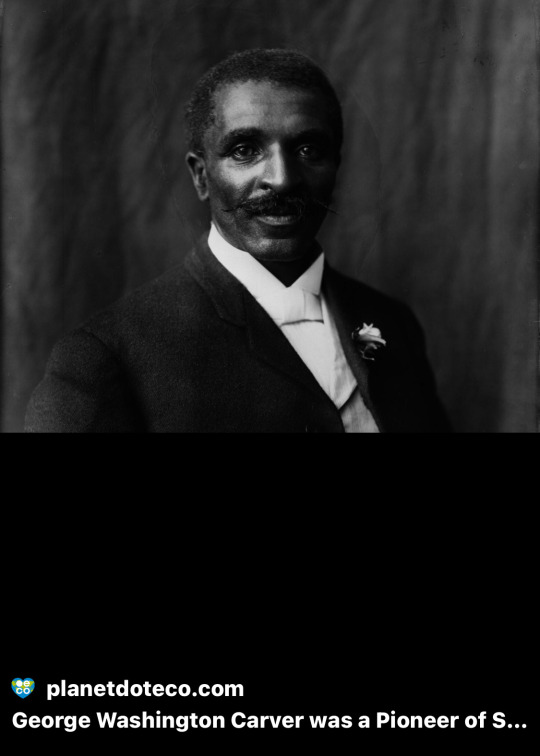




1. George Washington Carver (1864–1943):
An agricultural chemist, Carver developed alternative farming methods and is best known for his work with peanuts, introducing crop rotation techniques to improve soil fertility.
2. Dr. Shirley Ann Jackson (b. 1946):
A theoretical physicist, Dr. Jackson was the first African-American woman to earn a doctorate from MIT. Her research in physics led to advancements in telecommunications, including developments in caller ID and fiber-optic cables.
3. Katherine Johnson (1918–2020):
A mathematician whose calculations of orbital mechanics were critical to the success of U.S. crewed spaceflights, including John Glenn’s orbital mission in 1962. Her story gained widespread recognition through the book and film “Hidden Figures.”
4. Dr. Gladys West (b. 1930):
A mathematician whose work on satellite geodesy models was instrumental in the development of the Global Positioning System (GPS).
5. Roy L. Clay Sr. (1929–2024):
Known as the “Godfather of Silicon Valley,” Clay was a computer scientist who led the team that developed Hewlett-Packard’s first minicomputer and was instrumental in breaking racial barriers in the tech industry.
6. Dr. Mae Jemison (b. 1956):
A physician and NASA astronaut, Dr. Jemison became the first African-American woman to travel in space aboard the Space Shuttle Endeavour in 1992.
7. Dr. Neil deGrasse Tyson (b. 1958):
An astrophysicist and science communicator, Dr. Tyson has made significant contributions to the public’s understanding of space and science through his work at the Hayden Planetarium and various media appearances.
8. Dr. Kizzmekia Corbett (b. 1986):
An immunologist who played a leading role in the development of the Moderna COVID-19 vaccine, contributing to the fight against the global pandemic.
9. Dr. Daniel Hale Williams (1856–1931):
A pioneering surgeon, Dr. Williams performed one of the first successful open-heart surgeries in 1893. He also founded Provident Hospital in Chicago, the first non-segregated hospital in the United States.
10. Dr. Patricia Bath (1942–2019):
An ophthalmologist and inventor, Dr. Bath was the first African American woman to receive a medical patent. She invented the Laserphaco Probe, a device used to treat cataracts, significantly advancing eye surgery.
11. Dr. Charles Drew (1904–1950):
A physician and medical researcher, Dr. Drew developed improved techniques for blood storage and organized large-scale blood banks during World War II, saving countless lives. He was also the first African American to earn a Doctor of Medical Science degree from Columbia University.
12. Dr. James E. West (b. 1931):
An acoustician and inventor, Dr. West co-invented the electret microphone, a device used in approximately 90% of modern microphones, including those in telephones and hearing aids. He holds over 250 patents and has been a strong advocate for diversity in STEM fields.
13. Dr. Thomas Mensah (1950–2024):
A chemical engineer, Dr. Mensah made significant contributions to the development of fiber optic technology, which revolutionized telecommunications. He held 14 patents and was inducted into the National Academy of Inventors in 2015.
14. Marian Croak (b. 1955):
A computer scientist, Croak pioneered Voice over Internet Protocol (VoIP) technology, enabling voice communication over the internet. She holds over 200 patents and was inducted into the National Inventors Hall of Fame in 2022.
15. Dr. David Blackwell (1919–2010):
A renowned mathematician and statistician, Dr. Blackwell was the first African American inducted into the National Academy of Sciences. He made significant contributions to game theory, probability theory, and information theory.
These individuals represent just a few of the many Black pioneers who have made groundbreaking contributions to science and technology. Their work continues to inspire future generations in STEM fields.
#black tumblr#black and proud#african america history#black history month#black history#black excellence#black americans
23 notes
·
View notes
Text
Moon Mountain Name Honors NASA Mathematician Melba Mouton
youtube
2 notes
·
View notes
Text
Movies About Black Women in History 🎥

If you’re looking for inspiring films that highlight the achievements, struggles, and resilience of Black women throughout history, here are some must-watch movies:
1. Hidden Figures (2016)
Who It’s About: Katherine Johnson, Dorothy Vaughan, and Mary Jackson—three Black women mathematicians at NASA who played a crucial role in the U.S. space race.
Why Watch: It sheds light on their groundbreaking contributions to space exploration while navigating racism and sexism in the 1960s.
2. Harriet (2019)
Who It’s About: Harriet Tubman, the legendary abolitionist and conductor of the Underground Railroad.
Why Watch: The film showcases her bravery in leading enslaved people to freedom and her later work as a Union spy during the Civil War.
3. The Color Purple (1985 & 2023)
Who It’s About: Celie, a Black woman in the early 20th century South, and her journey of self-discovery and empowerment.
Why Watch: Based on Alice Walker’s Pulitzer Prize-winning novel, it’s a powerful story of resilience, sisterhood, and overcoming oppression.
4. Self Made: Inspired by the Life of Madam C.J. Walker (2020, Netflix Limited Series)
Who It’s About: Madam C.J. Walker, the first self-made Black female millionaire in the U.S.
Why Watch: This series dives into how she built a beauty empire despite racism, sexism, and personal struggles.
5. The Woman King (2022)
Who It’s About: The Agojie, an all-female warrior unit in the Kingdom of Dahomey, led by General Nanisca.
Why Watch: Though it’s a fictionalized retelling, it’s inspired by real African female warriors and their fight against colonial forces.
6. Respect (2021)
Who It’s About: Aretha Franklin, the Queen of Soul.
Why Watch: The biopic explores her rise to fame, activism, and impact on music history.
7. Queen of Katwe (2016)
Who It’s About: Phiona Mutesi, a young Ugandan chess prodigy.
Why Watch: It’s a heartwarming story of how she used chess to change her life and inspire others.
8. Bessie (2015, HBO)
Who It’s About: Bessie Smith, the Empress of the Blues.
Why Watch: The film follows her rise to fame in the 1920s, highlighting her struggles and triumphs in a segregated America.
9. Clemency (2019)
Who It’s About: A fictionalized but realistic portrayal of a Black female prison warden dealing with the morality of the death penalty.
Why Watch: It’s a thought-provoking film that explores systemic injustice and emotional turmoil in the criminal justice system.
10. Miss Juneteenth (2020)
Who It’s About: A former beauty queen preparing her daughter for a prestigious Juneteenth pageant.
Why Watch: It’s a touching exploration of Black motherhood, tradition, and resilience.
These films celebrate the strength, intelligence, and impact of Black women throughout history. Which ones have you seen or want to watch next?
#ambitious women#beautiful women#beauty#glow society#the glow society#fit beauty#health#self love#self improvement#self care#black femininity#black princess#black queen#black girl#black history#black woman#black people#black women#black beauty#black and white#black girl aesthetic#black girl moodboard#black is beautiful#movies#movie review#moviegifs#movie quotes
25 notes
·
View notes
Text
nanpa
noun: number; mathematics
adjective: relating to numbers
particle: before a number word [e.g., 'wan' (1), 'tu' (2), 'luka' (5), 'mute' (20)], indicates that the number is being used as an ordinal; equivalent to english "-th"
Examples:
mi jan nanpa. ("I'm a mathematician [lit. 'a number person'].")
nanpa ni li seme? ("What number is this?")
o pana e telo nasa nanpa tu wan. ("Give [me] a third drink [lit. 'strange water number two+one'].")
waso nanpa wan li jo e pipi linja, taso, soweli lili nanpa tu li jo e moku jelo. ("The first bird [lit. 'bird number one'] has the worm [lit. 'string-bug'], but the second mouse [lit. 'little animal number two'] has the cheese [lit. 'yellow food'].")
sitelen pona:

12 notes
·
View notes
Text
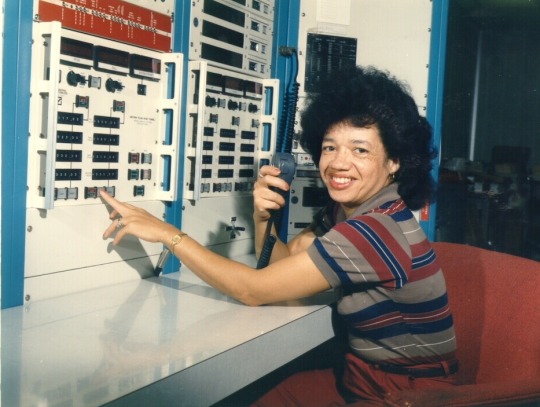
Christine Darden, mathematician and NASA aeronautical engineer (1975)
117 notes
·
View notes